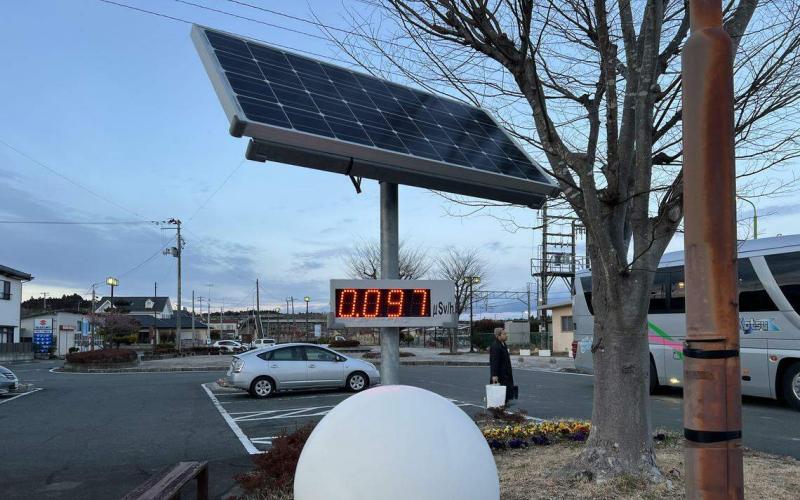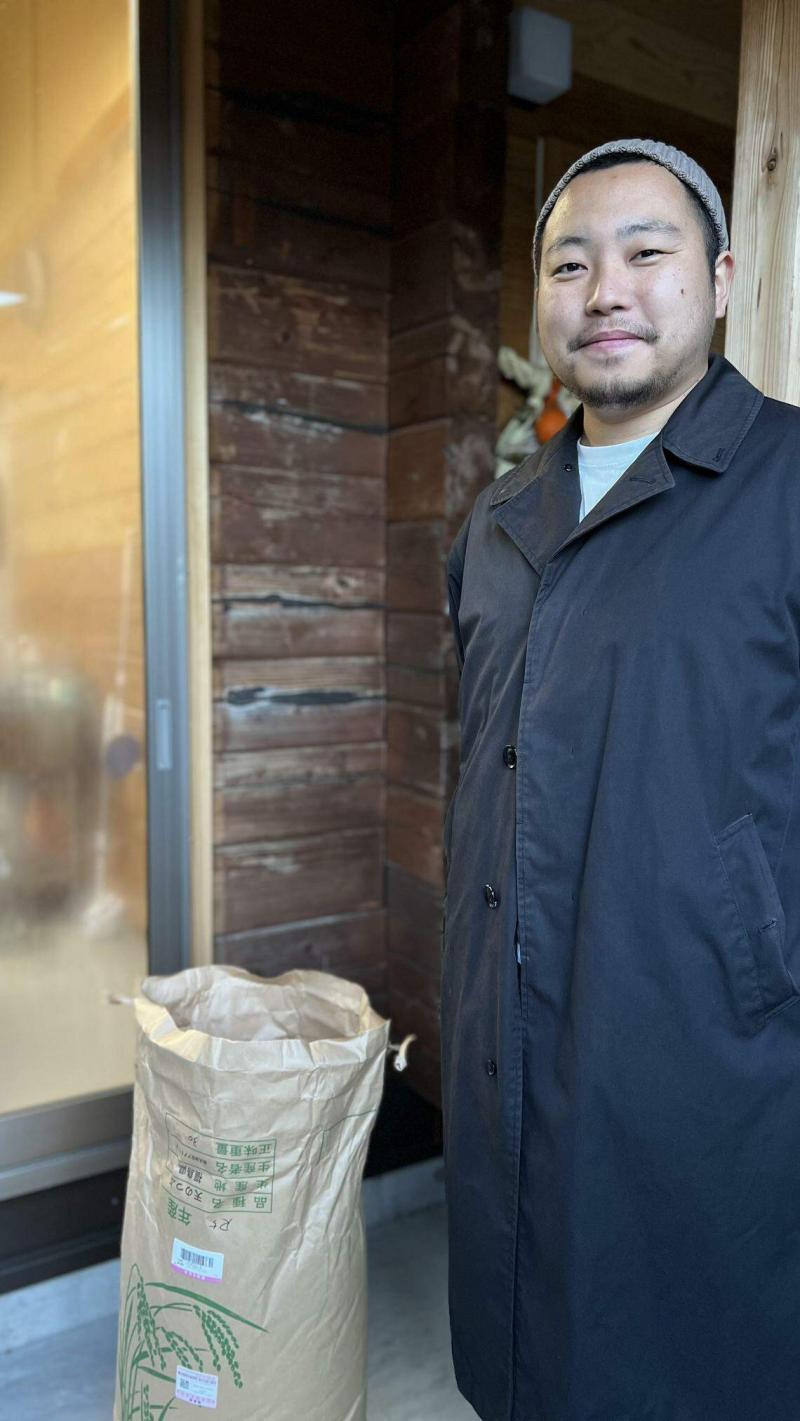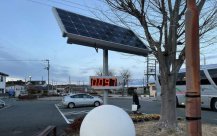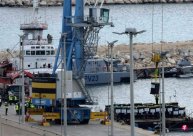 March 11, 2011, a large magnitude of earthquakes and tsunarius and tsunami of East Japan destroyed to destroy and destroyed to destroy and destroy the destruction.In the northeast coastal areas, the Fukushima First Nuclear Power Station had a pile of core melting and radiation leakage, which completely changed the fate of the surrounding rural and cities.
March 11, 2011, a large magnitude of earthquakes and tsunarius and tsunami of East Japan destroyed to destroy and destroyed to destroy and destroy the destruction.In the northeast coastal areas, the Fukushima First Nuclear Power Station had a pile of core melting and radiation leakage, which completely changed the fate of the surrounding rural and cities.
Lianhe Zaobao reporter recently entered the Fukushima's first nuclear power plant to store nuclear waste soil with the Ministry of Environmental Ministry of Environment.Along the way, you can see that the Fukushima First Nuclear Power Station is a pile of nuclear waste soil.A reporter with the group brought the radiation detector to detect the radiation level all the way.When the bus passed through some unwanted areas, the officials explained that the radiation volume here was a bit high, so that the reporter would not get out of the car to take pictures.
In 2015, the Japanese government officially invested in the purification work of the Fukushima disaster area, including clearing the soil on the surface of the field, cutting trees, and cleaning roads.The collected nuclear waste soil and pollution waste are packed in black bags called flexible container bags.In the past 13 years, the pollution soil has been contaminated by 14 million cubic meters, which is enough to fill the Tokyo baseball field or 5,500 Olympic pools.
Some land in Shuangyecho and Okiho are requisitioned as temporary storage bases for collecting pollutants.Perhaps in order to make the Fukushima citizens feel at ease, Japan officially introduced laws and promised to move the nuclear waste soil that meets the radioactive concentration standards out of the 30 years after the implementation of the pollution -removing plan in 2045.
Tosaki Kang, an official of the Environmental Regeneration Resources Circle Bureau of the Ministry of Environmental of Japan: This is a huge challenge we have to face. Not only must we ensure that the radiation volume is reduced, but we must also try to transfer the soil outside the county.To be transferred outside the county, the standard for normal incineration and landfilling must be complied with, that is, the concentration of radioactive 铯 per kilogram of radioactive must be lower than 8000 BECQUEREL.Our survey shows that the current standard soil accounts for three -quarters of the total storage.The official also plans to re -use public projects such as road construction lower than this standard soil.
The once -beautiful rural areas such as Shuangyecho, Langjiangcho, and Okachi Fishing Port are next to the Fukushima first nuclear power plant. After the nuclear leakage accident, they were listed as a difficult area for home.Although these town have been unsealed, there are not many people who are willing to go back.
According to the Fukushima Civil Daily, Sakaya -cho was unlocked in September 2015 and became the first autonomous city to relieve the evacuation order after the accident.After the restrictions were lifted, the number of residents who registered home rose to more than 50%after three years. However, there were fewer and fewer residents who returned to the hometown later. It is expected that there will be no increase in the next.After the disaster, it was listed as a small town of Langjiang and Fukuoka, which was particularly difficult to return to the district. Before the disaster, there were about 20,000 people in the town. Today, the population is less than 1,000.
The report pointed out that most of the victims who hoped to return to the place of residence are mostly elderly. Even if they have a strong willingness to return home, the original mutual aid network of the community has been fragmented.Therefore, in order to revive the disaster -stricken area, the Japanese government can only encourage people and enterprises from other counties to invest in venture capital in the disaster area with subsidies, and re -build the disaster area with the help of external forces.
Find Xintiandi in the nuclear disaster area
Fukushima is a place where the water source is sweet, the rice is fragrant, and it is the hometown of famous wine.

Sato, who originally lived in Saitama Prefecture, moved to start a business 25 kilometers away from the Fukushima First Nuclear Power Station.He brewed Fukushima Rice and tried to create a new world in the area that was listed as a banned area.(Photo by Fu Zhu Hui)
The 32 -year -old Sato Tai Liang originally lived in Saitama Prefecture and moved to a small high district 25 kilometers away from the nuclear power plant two years ago.He and his wife founded HACCOBA Japanese winery using Fukushima Rice Grain wine.
Sato told the Lianhe Zaobao: My birthday was March 11. When the Eastern Japan earthquake occurred 13 years ago, I celebrated my birthday at home in Saitama Prefecture, and was scared by the sudden shaking.At that time, it was a college student, and for the first time, I knew that there was such a nuclear power plant in Fukushima.If it wasn't for nuclear leaks, it would be a major accident at home and abroad in Japan. Maybe I would not know that the electricity in the Tokyo Capital Circle in my life would come from this power plant.
After the nuclear power plant accident, the small high area was designated as a restricted residential area, and the population was reduced to zero.Such a place is attractive for those who want to start a business from scratch.Sato said that he hopes to use the sake from Fukushima Rice Grain as a tool for people to think about social problems and think about the current situation of Fukushima.
Sato said: After the accident, the farmer who does not use pesticides has been hit the most.
The Asano Turkey Company, headquarters in Gifu County, invested in the construction of a factory in the scarce of Humanish -smoked Two -Town in 2019, named the super zero factory.80 % of the 2.2 billion yen (about 20 million yuan) funds invested by the shampoa company are from the government.The two -story steel bone building area is 28,000 square meters. The appearance is like a giant dome gym. It has a towel factory, a sales department, a cafe, etc. inside.It is understood that the official hopes that this super -zero factory can be used as a exchange base for expanding and revitalizing Shuangyecho, playing the role of revitalizing the Great Earthquake and Nuclear Power Station accidents.
The company's chairman Asako Yaji said in an interview with Lianhe Morning Post: Japan can choose to give up this land, as sealed as the Chelnobel region in the Russian nuclear accident, which only needs (Japan) to be used in the thousandths of the thousandths of rejuvenation.You can do it with one fee.The Japanese government chose to take the road to revival because there is an example of Hiroshima.We can stand up from the ruins of the atomic bullet and believe that Fukushima's nuclear disaster area can be reborn.
There are 20 fully automated yarn production machines standing up in this new factory in nuclear democations.Most of the company recruited young staff outside the disaster area, and the factory also hired several Vietnamese employees.Asano said confidently: The crisis is the turnaround. From scratch, it may not be negative. What I value is that there is nothing here, because it can make people more freely plan their dreams.
Shuangyecho has been committed to attracting enterprises to settle in, and has signed 24 rejuvenation projects so far.Takakuraguku, the mayor of the Hamano Administrative Region, said: I hope that more companies can enter, think about the future here, and revitalize this area.
Energy policy has always been a question of official thinking after the nuclear disaster.It is understood that one of the official plans is to transform the Fukushima nuclear disaster area into key areas of renewable energy and low carbonization.Japanese automobile companies have developed electric vehicle sharing services in the disaster area. It is planned to establish an electric park in Langjiangcho, which has a population of only 500 people, and promotes regional revitalization with clean energy to create a new environment for the next generation.
It is estimated that it will take at least 30 years to clean up the wreckage of the nuclear power plant.The surrounding town of the nuclear power plant has become a ghost city due to nuclear leakage accidents. Now it is the only way for these areas to re -stand on the heels because of external forces.




